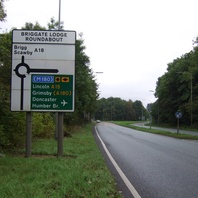
Viking Names
Scawby
Scawby, in the Manley Wapentake of Lincolnshire, likely comes from the Old Norse male personal name and byname Skalli, related to Old Norse skalli ‘a bald head, a bald-headed person’ and bý ‘a farmstead, a village’. Alternatively, skalli could be used to describe a bald hill. In the neighbouring parish of Broughton the minor names Scalehou and Scallehou were recorded in the twelfth and thirteenth century, the first element being the same Old Norse personal name with Old Norse haugr ‘mound’. Likely the Skalli of Skal(l)ehou was the same person as Skalli of Scawby.
Read More

Viking Names
Crosby
Crosby, in the Manley Wapentake of Lincolnshire, is a difficult name. The earliest spelling of the name in the Domesday Book suggests that the name comes from the Old Norse male personal name Kroppr and the Old Norse element bý ‘a farmstead, a village’. However, it is believed that this spelling is an error as it is not supported by later forms which indicate rather a place-name meaning ‘the farmstead, village marked by crosses’, from krossa, the genitive plural of Old Norse kross ‘cross’, with Old Norse bý.
Read More
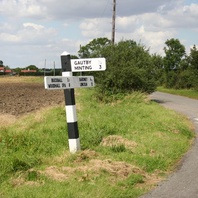
Viking Names
Gautby
Gautby, in the South Riding of Lindsey in Lincolnshire, comes from the Old Norse male personal name Gauti and Old Norse bý ‘a farmstead, a village’.
Read More
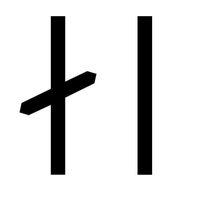
Viking Names
Eileif
The Old Norse male personal name Eiláfr/Eileifr is not always to be distinguished from another Old Norse male personal name Eilífr. This is evident in the place-name Elston, Nottinghamshire where the first element is either Eiláfr or perhaps Eilífr. Eiláfr/Eileifr is an Old Norse compound name with the first element being either Ei- ‘always’ or Ein- ‘one, alone, single’ combined with the second element -leifr/-láfr ‘inheritance’ which when used in a personal name likely has the sense of ‘son’. This name was frequently used throughout medieval Scandinavia and is attested in Danish place-names and runic inscription, Swedish runic inscriptions, and became common in Norway after 1270. The name occurs in Domesday Book, and later medieval documents, for both Lincolnshire and Yorkshire.
Read More
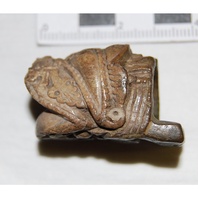
Viking Objects
Dragon’s Head Mount (L.A67.1864.1.0)
This mount from Leicester is in the form of a dragon’s head and is thought to be Scandinavian work. The base of the head is extended, slotted and necked as though for a hinge. There are green stains suggesting that it was attached to an item of copper or bronze. Mounts were generally used to decorate various items such as belts or pouches. In this case, it may have been a fitting for a knife. Mounts were usually attached to items by hammering over the metal studs on the back of the mount.
Read More
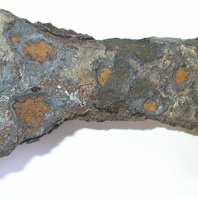
Viking Objects
Iron Axe-head (1989-58/3296)
Axes were not only a common implement used for a variety of wood based activities, such as constructing ships, but also were often used as weapons. Axes came in a variety of shapes and sizes depending on their function. This one was made to be a weapon and would have been wielded with a single hand. It was found at Repton in Derbyshire where there was a Viking camp which was recorded in the Anglo-Saxon Chronicle under the year 873/4.
Read More
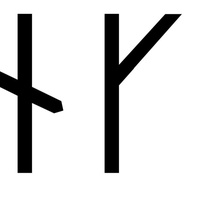
Viking Names
Inga
Inga is very common in Denmark and Sweden (where it appears in a number of runic inscriptions) and probably spread from these two areas into Norway in the thirteenth century. where the name remained popular thereafter; however, it is also possible that Inga developed independently in Norway. In the Danelaw, Inga appears in medieval documents from Lincolnshire as early as c. 1160. The name is a short form of Old Norse female names in Ing(i)-, which is of doubtful origin but perhaps related to a Greek word meaning ‘lance, staff’.
Read More
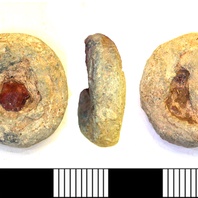
Viking Objects
Circular Weight (LEIC-5C4051)
This circular weight has a centrally placed orange stone chip inlaid into it. The distinction of weights by embedded objects or other embellishments in various media is a widely recognised feature of some early medieval weights. Weights are an important form of evidence for Viking Age commerce and the use of standards across the different economic systems within which Vikings were integrated. Many of the weights discovered, particularly ones in Ireland and those of Arabic type, suggest that a standardized system of weights existed in some areas. These standard weights, alongside standard values of silver, are what allowed the bullion economy of Viking occupied areas to function. A bullion economy was a barter economy that relied on the exchange of set amounts of precious metal in various forms, such as arm-rings or coins, for tradable goods, such as food or textiles. Each merchant would have brought their own set of weights and scales to a transaction to make sure that the trade was conducted fairly.
Read More
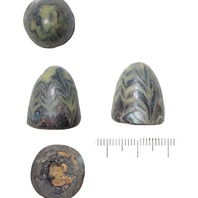
Viking Objects
Glass Gaming Piece (LIN-C31CD7)
There are different possible interpretations of this Lincolnshire find from 2012. It could be a playing-piece as interpreted in the reproductions. Anglo-Saxon playing-pieces of shaped animal tooth are of similar dimensions, while glass counters were used both in the Roman period and taller glass playing men in the Viking period. This find is however considered by some archaeologists more likely to be a decorative setting from fine metalwork. The rather muddy glass colours suggest that the glasses used had already been recycled, and the clay core indicates careful use of a precious resource as well as a means of moulding on a decorated sheet of glass. The best parallels for this find, though none matches the form, are the oval cabochon pieces of dark blue and opaque white glass from the Anglo-Saxon monastery at Monkwearmouth, County Durham. Prominent coloured glass inlays are a part of the Insular tradition with its roots in Ireland. In Irish work the emphasis is on contrasting coloured zones and inlays, technically more complex and in a diverging tradition from this new find, though imitated elsewhere in English work.
Read More
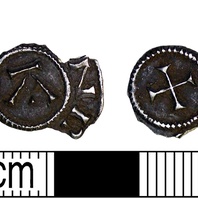
Viking Objects
St. Edmund Penny (LEIC-8D0E07)
Between 895 and 915, Scandinavian settlers in East Anglia minted a series of pennies and half pennies with the inscription SCE EADMVND REX (St Edmund the king). These coins appear to have been used widely throughout the Danelaw, and a large number of them were discovered in the Cuerdale Hoard from Lancashire. This coin appears to have been made with a poorly engraved die and features a blundered inscription naming the moneyer. The Portable Antiquities Scheme suggests that the moneyer’s name was Winegar. The inscription reads YVINRE NO.
Read More
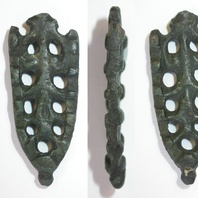
Viking Objects
Winchester-Style Strap-End (DENO-C276C4)
This strap-end employs a modified version of the Winchester style of the eleventh century using Scandinavian designs and is classified as a Thomas Class E, Type 1 strap-end. Strap-ends came in various styles and were fairly common throughout the Viking world. They were used to decorate the ends of belts and to stop them getting damaged.
